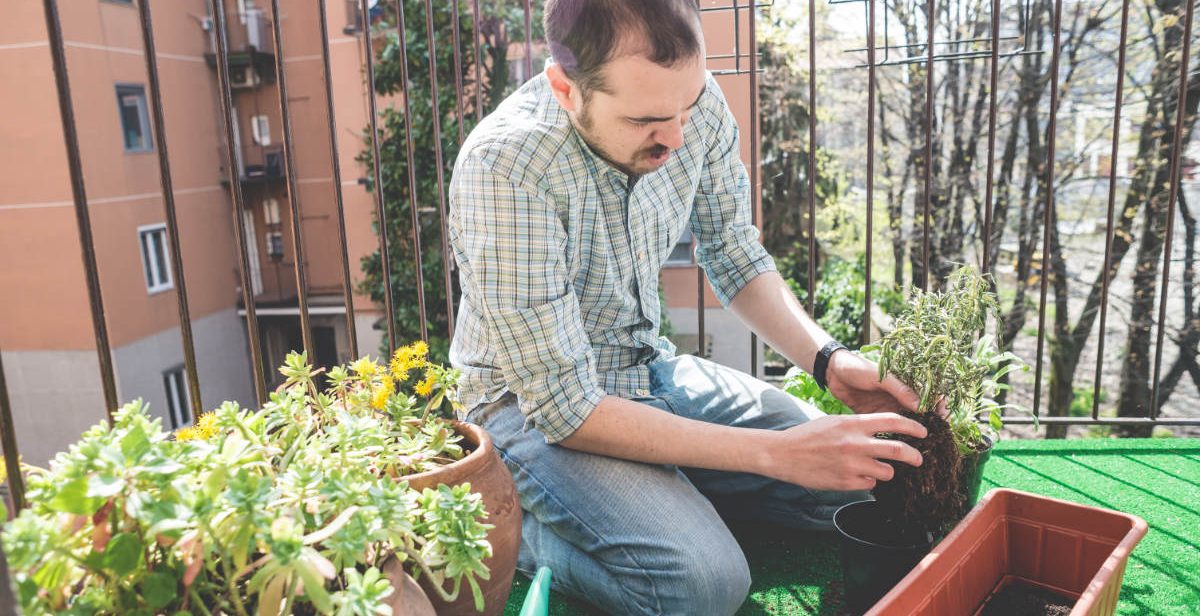If you like gardening, you probably find yourself contending with weeds and crop failures. Industrial gardening techniques may seem like a quick and easy solution. But pesticide use eventually leads to soil damage. And prolonged pesticide use may cause cancer and numerous other health conditions. So if you care about your health, and that of your garden, then it’s time to look for some sustainable gardening practices.
Sustainable gardening is not a one-size-fits-all method. It’s all about trial and error. But it certainly helps to know which direction you’re moving in. Read on to discover some sustainable gardening practices you can implement in your garden. And please comment below to share your experiences.
1. Use Natural Alternatives to Glyphosates
Despite being used around the world to kill unwanted plants around crops, glyphosates have hit the headlines in recent years for their negative health ramifications. Glyphosates can affect your kidneys and liver. And they may even cause cancer. With that in mind, you should definitely avoid glyphosate use at home.
Permaculture teaches that there is not much point in trying to eradicate weeds from your garden. The idea is that the plants we call weeds actually have a role to play in your garden’s ecosystem. But if you absolutely must get rid of the weeds, why not try some more natural herbicides?
Corn gluten for weeds
Corn gluten is a by-product that comes from the corn milling process. It is also an organic pre-emergent weed killer and a high-nitrogen fertilizer. Apply corn gluten to the garden in early spring and again in the late fall to eliminate weeds before they germinate.
Vinegar for weeds
Vinegar is an effective weed killer. Pour it into a spray bottle and dust weeds as soon as they appear. But remember not to get the vinegar on surrounding plants as it will also harm your vegetables.
Salt for weeds
Salt is a cheap, organic way to kill weeds. Salt seeps into the soil and dehydrates the weed roots. However, it will also kill your plants, so use it with caution. And, unlike organic pesticides, sodium never breaks down. So be mindful that although the salt you use will eventually wash away, it will end up somewhere else.
2. Use Technology to Improve Crop Yield
When used appropriately, technology can improve crop yield in the garden. And after you’ve paid off the initial outlay, smart technology can save you valuable time and money.
Smart drip irrigation
Drip irrigation that uses Cloud technology takes water to the plants that need it in just the right quantity. Sensors in drip line hoses measure the amount of water in the soil. Then they send a signal to the water pump via the Cloud to turn the water on or off. This can save you time. And it can also save your most valuable resource: water.
Indoor vertical farming
Because of its versatility, indoor vertical farming can increase crop yields, overcome limited land space, and is a sustainable gardening method. Indoor vertical farming is a method of growing food in containers that are stacked one above another in a closed and technologically controlled environment.
3. Use fallen trees as sustainable Building Materials
Felled trees have a wide range of uses in the garden.
* Tree trunks can be cut into 2-inch thick slices and used to create garden pathways.
* Tree branches can be used to create trellises for climbing vines like cucumbers.
* Recycle and re-use everything in the garden. Even a dead tree can live again in the garden.
4. Cloud Technology
Cloud technology transforms traditional drip irrigation into smart irrigation. Water goes to the plants that need it in just the right amount for the best growth and production.
Sensors in the drip line hoses measure the amount of water and send a signal to the water pump via the Cloud to turn on, or off, the water. Water goes to the plants that need it in just the right amount for the best growth and production.
Sensors
Different sensors along the drip lines detect various factors in the field that determine if plants need more, or less, water. Factors like humidity, temperature, moisture, and sunlight contribute to how much water a plant will need on any given day.
Sensors along the drip line give signals to the Cloud micro-controller, which in turn gives the data to the isolated server through serial communication.
Smart Phone Control
All the information gathered from the smart irrigation system in the field can be accessed on the Cloud via a PC or Smart Phone. The data can be used to determine if the water needs to be turned on or off, and that can be done via a PC or Smart Phone.
With an app, the Cloud server can interpret the data gathered by the sensors and be programmed to turn the water off and on automatically. Not only does this type of technology improve crop yields, but it also frees up time for the farmer or home gardener.
By not having to be in the garden or field to physically check for soil moisture, the farmer/gardener has more freedom to do other tasks. The crops will be watered in just the right amount by Cloud technology so the yield will be increased.

